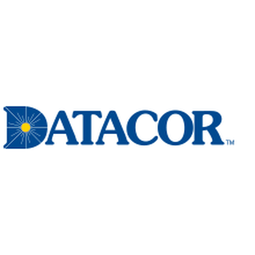Download PDF
Increasing Profitability through IoT: A Case Study on Whitaker Oil Company

Technology Category
- Functional Applications - Enterprise Resource Planning Systems (ERP)
- Sensors - Chemical Sensors
Applicable Industries
- Oil & Gas
- Packaging
Applicable Functions
- Logistics & Transportation
- Procurement
Use Cases
- Inventory Management
- Last Mile Delivery
The Challenge
Whitaker Oil, a fourth-generation, family-owned chemical and composite materials distributor, was facing a significant challenge in managing its complex enterprise. With multiple companies and facilities under its umbrella, the company needed a business software solution that could help them manage and measure profitability at the transaction level. The solution needed to be specifically designed for the chemical industry, considering the unique requirements and challenges of this sector. The company was looking for a solution that could capture every transaction, manage complex batching and blending, inventory management, purchasing, safety, price management, order entry, invoicing, and financial statements.
The Customer
Whitaker
About The Customer
Whitaker Oil is a fourth-generation, family-owned business that began in Atlanta, GA, with a single gasoline pump in the 1920s. Over the years, the company expanded its services to include solvents, bulk storage, custom blending, and packaging to meet the needs of its customers. In 2008, Whitaker Oil further expanded its distribution of polyester resins, epoxy resins, fiberglass, and other composite materials from Florida to the entire Southeast. The company operates multiple companies and facilities, making it a complex enterprise that requires a robust and efficient management system.
The Solution
After researching various software solutions, Whitaker Oil selected Datacor ERP VB from Datacor, Inc. This software was recognized as a leader in the chemical distribution software business, making it a suitable choice for Whitaker Oil. The Datacor ERP VB software was capable of capturing every transaction conducted by the company. It mirrored the entire enterprise, managing complex business processes such as batching and blending, inventory management, purchasing, safety, price management, order entry, invoicing, and financial statements. The software also allowed for the automation of report distribution to key management and sales personnel, providing them with up-to-date information on customer order and invoicing activity.
Operational Impact
Related Case Studies.

Case Study
Taking Oil and Gas Exploration to the Next Level
DownUnder GeoSolutions (DUG) wanted to increase computing performance by 5 to 10 times to improve seismic processing. The solution must build on current architecture software investments without sacrificing existing software and scale computing without scaling IT infrastructure costs.

Case Study
Remote Wellhead Monitoring
Each wellhead was equipped with various sensors and meters that needed to be monitored and controlled from a central HMI, often miles away from the assets in the field. Redundant solar and wind generators were installed at each wellhead to support the electrical needs of the pumpstations, temperature meters, cameras, and cellular modules. In addition to asset management and remote control capabilities, data logging for remote surveillance and alarm notifications was a key demand from the customer. Terra Ferma’s solution needed to be power efficient, reliable, and capable of supporting high-bandwidth data-feeds. They needed a multi-link cellular connection to a central server that sustained reliable and redundant monitoring and control of flow meters, temperature sensors, power supply, and event-logging; including video and image files. This open-standard network needed to interface with the existing SCADA and proprietary network management software.

Case Study
Refinery Saves Over $700,000 with Smart Wireless
One of the largest petroleum refineries in the world is equipped to refine various types of crude oil and manufacture various grades of fuel from motor gasoline to Aviation Turbine Fuel. Due to wear and tear, eight hydrogen valves in each refinery were leaking, and each cost $1800 per ton of hydrogen vented. The plant also had leakage on nearly 30 flare control hydrocarbon valves. The refinery wanted a continuous, online monitoring system that could catch leaks early, minimize hydrogen and hydrocarbon production losses, and improve safety for maintenance.








